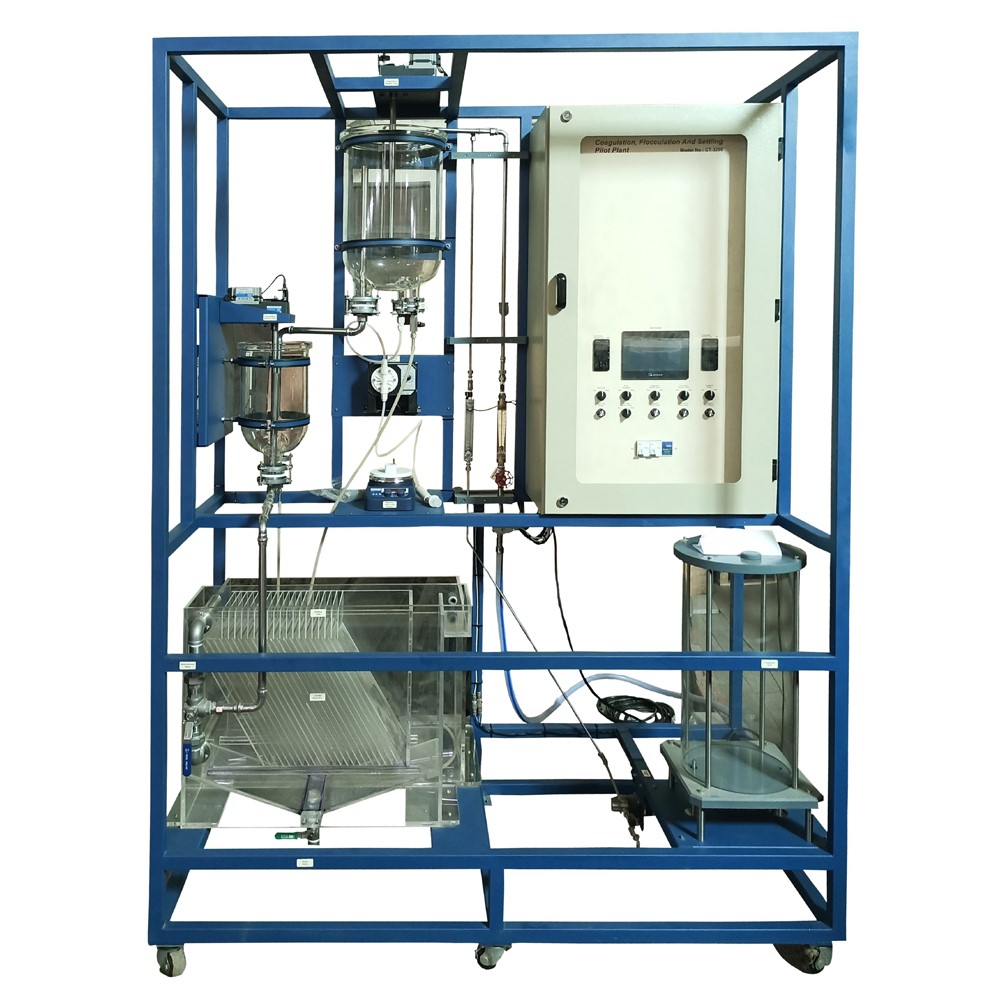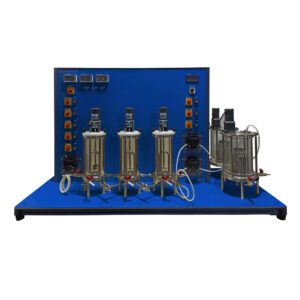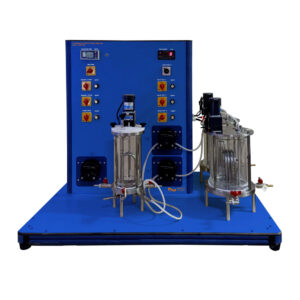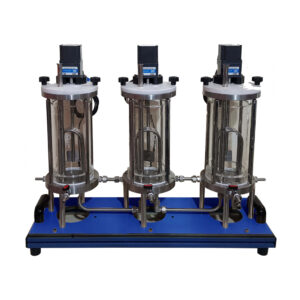Coagulation, Flocculation, and Settling Pilot Plant demonstrate the removal of dissolved substances by precipitation with subsequent sedimentation. The pump transports raw water to a coagulation reactor provided with a coagulant tank where insoluble hydroxides form. Then, raw water flows into the flocculation reactor provided with a flocculent tank. The purpose of flocculation is to improve the settling properties of solids. The primary objective of flocculation is to improve the solids’ sedimentation properties. The repulsive forces between the solid particles are canceled out by adding a coagulant in the first chamber. The solid particles aggregate into flocs (coagulation). To generate larger flocs, a flocculent is then added (flocculation). In the third chamber (settler tank) low flow velocities are present to prevent any turbulence.
Turbulence would impede the formation of flocs. The now well-sedimentable flocs are then separated from the treated water in a lamella separator. The treated water and the sediment flocs (sludge) are collected in two tanks. Flow rates are measured. In addition, the pH value in the precipitation tank can be controlled (optional). For measuring the conductivity an external meter is available (optional). All pertinent points can be sampled. The tank (product tank) is transparent for the inspection of the treated water. Analysis technology is required to analyze the experiments. The choice of analysis technology depends on the substances used. Trivalent metallic salts are usually well-suited as coagulants. Common flocculants are organic polymers.




